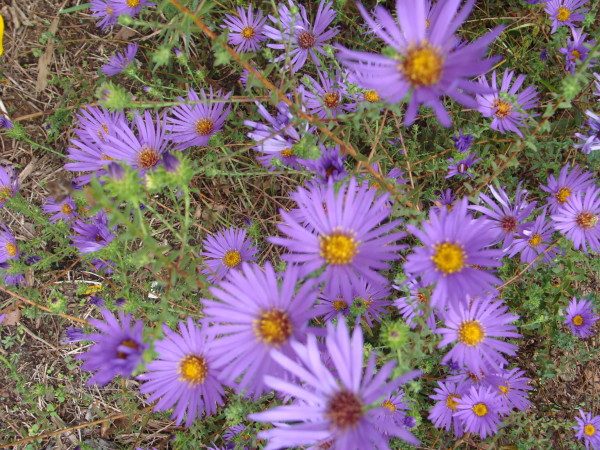 The summer season of color in the herbaceous border is now past but there is yet a group of fall stalwarts that delight in the cooler weather and provide color over the autumn months; most notably the many species of Asters, Sunflowers, and Goldenrods.
The summer season of color in the herbaceous border is now past but there is yet a group of fall stalwarts that delight in the cooler weather and provide color over the autumn months; most notably the many species of Asters, Sunflowers, and Goldenrods.
Asters were generally known as “Starworts” to 18th-century botanists and gardeners and one of the most unique is the Large Flowered Aster Symphyotrichum grandiflora, found in only a few counties in eastern Virginia and the Carolinas. So named for its extraordinarily large blooms, it was first described by John Clayton (1695 – 1773), clerk of courts in nearby Gloucester County, as “A very beautiful Starwort.” This is an upright plant with small, stiff foliage that thrives best in a sunny site with sharp drainage.
At one time the term “Aster” served as both the common and scientific name for the genus. Recently, however, the genus has been split between Symphyotrichum and Eurybia. One of the prettiest examples of the latter is the Eastern Showy Aster, Eurybia spectabilis, found in scattered locations on the Eastern Seaboard. It is threatened over much of its native range due to a loss of habitat as it prefers a sandy site with a water view, a habitat also preferred by developers. Often described as an upright plant, I have found it to be more of a sprawler, almost a ground cover, in my garden with large light blue to violet flowers.
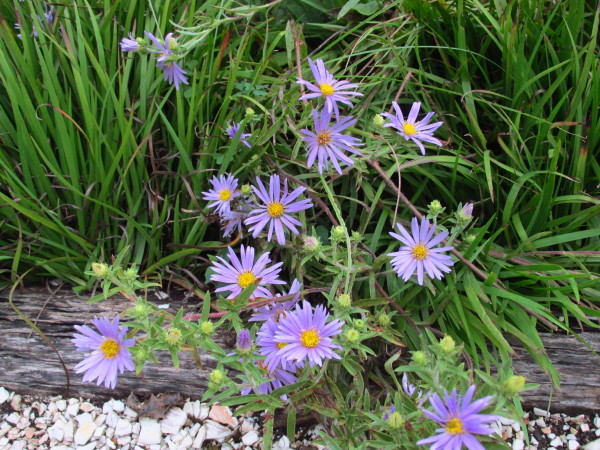 Several of our native sunflowers provide late season color and many grow to a prodigious height. One of the tallest is the Giant Sunflower, Helianthus giganteus. Though the flowers are small the plant can easily grow to ten feet tall and I have had it in bloom the first week of December. Normally found in wet soils it adapts easily to normal garden soils and is very shade tolerant. Taller still is the Jerusalem artichoke, Helianthus tuberosus, which grew to just over twelve feet with us this year. It is notorious for its spreading habit but if you have the room and the will to contain it this giant will provide not only a fall flower show but a bounty of fleshy, edible roots that some say taste like the heart of an artichoke.
Several of our native sunflowers provide late season color and many grow to a prodigious height. One of the tallest is the Giant Sunflower, Helianthus giganteus. Though the flowers are small the plant can easily grow to ten feet tall and I have had it in bloom the first week of December. Normally found in wet soils it adapts easily to normal garden soils and is very shade tolerant. Taller still is the Jerusalem artichoke, Helianthus tuberosus, which grew to just over twelve feet with us this year. It is notorious for its spreading habit but if you have the room and the will to contain it this giant will provide not only a fall flower show but a bounty of fleshy, edible roots that some say taste like the heart of an artichoke.
The most misunderstood members of this group are the Goldenrods. Often, and unjustly, blamed as the cause of fall allergies it is actually the ragweed, which blooms with the goldenrod that provides the misery. Ragweed is a smallish plant and often goes unnoticed as its flowers are not showy at all but are rather held in small green spires that blend against its foliage. It has no reason to produce showy flowers to attract insects as its pollen is transmitted by the wind, directly as it were, to the sufferer’s sinus cavities.
Goldenrods, on the other hand, produce showy yellow flowers because they need to attract insects to carry their pollen from one plant to the next so unless a bee should fly up your nose, it is not possible to suffer an allergic reaction from goldenrod. Of the many species of Solidago fit for the garden, perhaps the most popular is the rough goldenrod, Solidago rugosa. Shown, in this instance, over the Aromoatic Aster, Symphyotrichum oblongifolium, it forms a billow of yellow. Like the sunflowers it is prone to spread but a little judicious thinning in late fall we keep it within bounds.
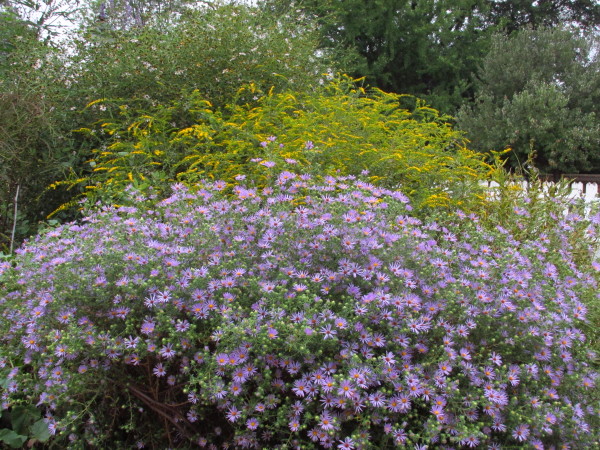 And now, faithful readers, I must say farewell as this will be the last entry in the garden conversation we have held over the last several years. However, I invite you to visit our Facebook page, Colonial Williamsburg Garden, for a more interactive experience with the apprentice gardeners!
And now, faithful readers, I must say farewell as this will be the last entry in the garden conversation we have held over the last several years. However, I invite you to visit our Facebook page, Colonial Williamsburg Garden, for a more interactive experience with the apprentice gardeners!
I remain, yr. most humble and obedient servant,
Wesley Greene
Blogger: Wesley Greene
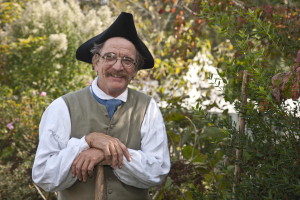 Wesley has spent 30 years researching historic plants and recently shared his findings in his book, Vegetable Gardening the Colonial Williamsburg Way. Wesley studied botany and plant and soil science at the University of Maine. In 1996, he founded the Colonial Garden and Nursery in the Historic Area of Colonial Williamsburg. That’s where you’ll find him in his element, interpreting 18th-century plants, tools, and cultural techniques.
Wesley has spent 30 years researching historic plants and recently shared his findings in his book, Vegetable Gardening the Colonial Williamsburg Way. Wesley studied botany and plant and soil science at the University of Maine. In 1996, he founded the Colonial Garden and Nursery in the Historic Area of Colonial Williamsburg. That’s where you’ll find him in his element, interpreting 18th-century plants, tools, and cultural techniques.
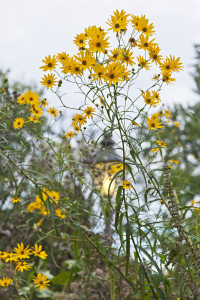
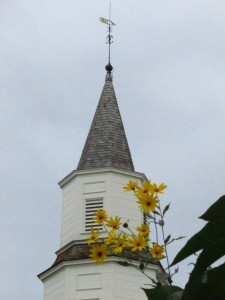
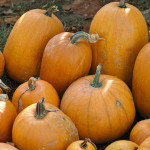
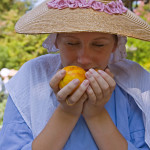
Phyllis Bireley says
Dear Wesley: I enjoyed reading your blogs and attending your seminars. My greatest pleasure was in visiting with you at CW in the garden. You shared a wealth of knowledge with me. It is with a heavy heart that I realize that I will not see you when I visit CW in the Spring. I wish miss our chats on gardening. As we talked about, I am going to start the Master Gardener Program next year. Your encouragement has helped me to believe that I can achieve my dream and become a Master Gardner.
You will be missed in the garden of CW.
Best wishes on your retirement.
I was very pleased that I had the opportunity to meet & speak with you during my visit last week. I always looked forward to your writings even though many of the plants will not grow here in Michigan. Enjoy your much deserved retirement. You will be missed.
Jeanne says
Thank you for sharing your expertise! I have learned so much from you and will miss your entries and the way you tied them to the seasons. I hope we continue to see you in the gardens of Williamsburg.
Congratulations to you on your retirement. I know several months ago you said you would retire this fall. Your presence will be so missed. Your knowledge in person and on the blog has been so interesting and helpful. Thank you for all I have learned from you. Your staff has some big shoes to fill.
Congratulations on reaching this milestone. We have enjoyed and appreciated your work these many years. Have a very happy retirement, for to paraphrase TJ, “you are but a young gardener!” The Langerhans, Moorestown, NJ
Dearest Wesley,
Are you leaving CW? If this is so, I am sorry I was never able to get CW to meet you in person. Your expert knowledge has helped me, your humble student to actually harvest many vegetables from my containers. Please feel free to take my e-mail address from the CW files and stay in contact.
God speed my friend,
Your humble gardening student,
Chris Hansley
Thank you for your knowledge and willingness to share with others, including my daughter in 2010
Are you retiring? If so, we will miss seeing you in the garden when we visit - and reading your postings, of course!